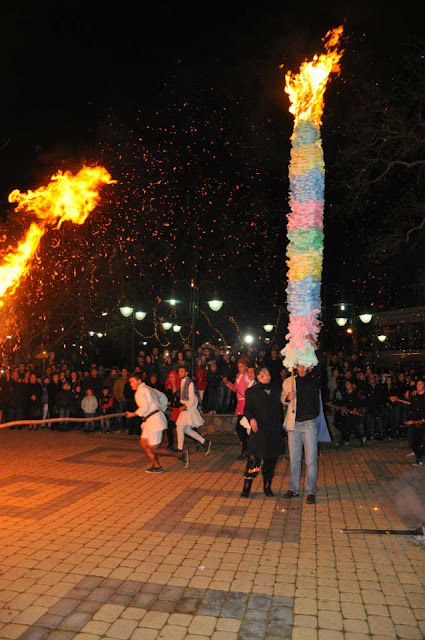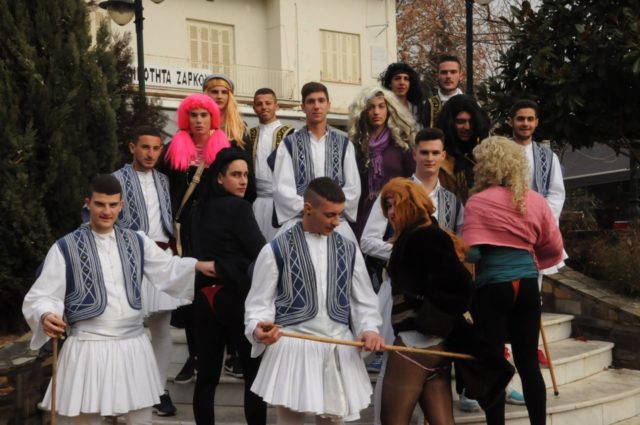In Zarko Trikala on the eve of the Lights and on the day of the great holiday of Orthodoxy, young and old will revive the “Bouluki” or the so-called “Kavouki”. A Dionysian custom whose history goes back hundreds of years and every year attracts the attention of the whole of Thessaly.
In the morning, the procedures for the construction of the “kavukou” begin, with the young people participating in the custom setting up a feast in the house of the “kavukou” from very early on, and with the events continuing until the evening of the same day with a municipal orchestra, plenty of food and alcohol.

After the morning solemn service, residents and visitors watch the first part of the ritual in the central square of the village. Where the “devil”, with the “crab”, the “doctor” and the “peanuts” will give their best to entertain the attendees.
The climax of this two-day celebration will be in the afternoon of the same day. Just before sunset (17:00 pm) a crowd of people will gather again in the central square of the village to dance to the sounds of the clarinet and watch the burning of the “kavouki”, which marks for Zarkinos and officially the beginning of the new year.

For the record, the following participate in the custom:
– THE KAVOUKAS (the one who lifts the “shell” on his head). The “bark” is a construction made of reeds in a cylindrical shape, 3-4 meters long covered with dense colorful papers. He wears his cape, only on one sleeve and in his hand he holds a stick to hold the “shell”. Finally, the “kavoukas” symbolizes the people, who have on their necks, the weight of the yoke, the tyrant and the “kavouki” symbolizes the Ottoman Empire, it has the shape of a mosque minaret and when it burns the people rejoice for their liberation.
– THE DOCTOR, who symbolizes the health of the “pack” and the inhabitants. He is responsible for the finances of the custom such as paying for the traditional orchestra and all expenses. He has gone down in history as the tax collector during the Turkish occupation.
– THE DEVIL or PANAS, is the god Panas, painted all over his body, who wears goat horns and bells around his waist to make noise. During the period of the Turkish occupation, it was renamed “Diavolo”. His role is to set fire to the “shell” carried by the “kavoukas”, dancing ecstatically.
– The COUPLES (6 to 7) of the young people participating in the custom are all men. (In ancient drama and female roles were played by men). They are dressed according to tradition, choliades and are called “Grooms”. Men who are dressed as women and wear clothes of our time. They are called “Brides” and are the “bridge” between yesterday and today.
– The ARAPADES, painted with black varnish on the face and body, wear black clothes, caps, bells and feathers from hens, have camels (made of wood and burlap) and represent the army of the conquerors, for this reason their mission is to provoke fear and noise.


